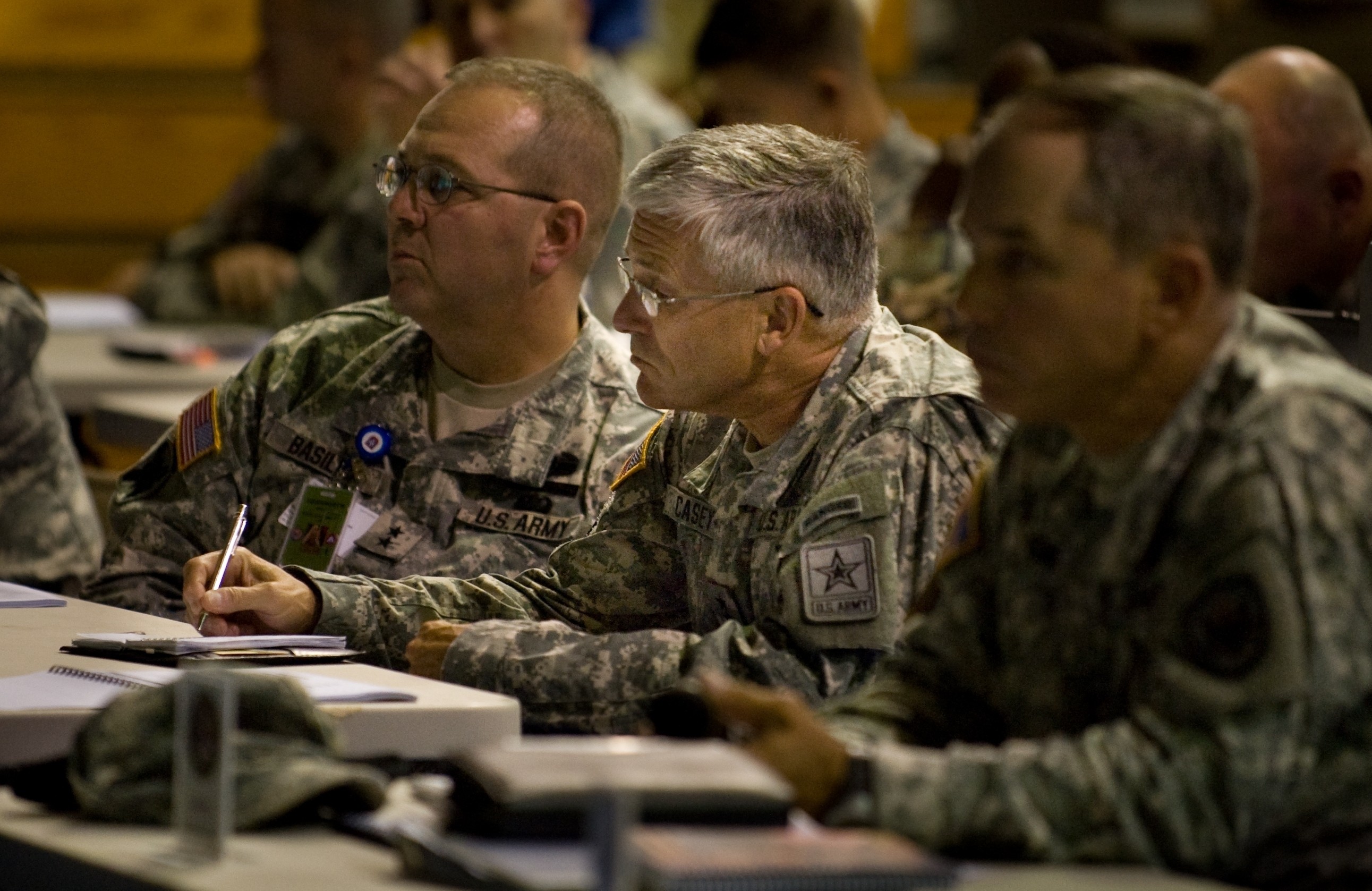
FORT STEWART, Ga. (Army News Service, Sep. 15, 2008) -- Troops who are soon to be part of a federal military consequence management force drilled on their new response mission here Sept. 14 under the attentive eye of the Army's senior ranking general.
Gen. George Casey watched, listened and asked questions as Soldiers, Sailors, Airmen and Marines walked through how they might fly search and rescue missions, extract casualties and decontaminate those affected by a catastrophic nuclear attack in the nation's heartland.
The Army's chief of staff flew here Sept. 14 to see the force, which will assume its mission Oct. 1 when the units are assigned to U.S. Northern Command. The force's mission will be to respond to CBRNE, or chemical, biological, radiological, nuclear or high-yield explosive, incidents.
The force, known as the CBRNE Consequence Management Response Force, or CCMRF, has gone through a week of academics in preparation for a mission readiness exercise Sept. 15-18 at Fort Stewart.
In addressing the 250 assembled service members, Casey underscored the importance of a trained and robust federal military response force.
"There are terrorist organizations out there who are still trying to obtain nuclear or radiological materials," he said. "There is no doubt in my mind that when they acquire them, they will attempt to use them."
He also pointed out that being part of the new force requires a shift in thinking for Soldiers who are accustomed to taking charge. Federal military forces must remember that they work in support of a civilian agency while operating within the United States, he said.
That's one reason that training exercise will require members of the force to coordinate with local governments and interagency organizations such as the Federal Bureau of Investigation and the Federal Emergency Management Agency, said Col. Jay Larsen, chief of training and exercises for U.S. Army North, Fort Sam Houston, Texas.
The previous week of academic instruction served as the framework for commanders and staff to understand and begin to exercise their new mission, Larsen said.
"Today's drill then allowed them to 'what if' their plan, to find conflicts in the battle space, find gaps in their coordination they didn't know existed, and to mitigate those gaps to better execute their plan," he said.
The last event, the mission rehearsal exercise starting Monday, will stress leaders and decision makers at every level - all so they are prepared to respond to the unthinkable.
"We are at war with a global extremist network that is not going away," Casey said in closing. "I hope we don't have to use it, but we need the capability (to respond)."
More than 800 service members and civilians will take part in next week's exercise, called Vibrant Response. Army North is conducting the training event as the joint force land component command of U.S. Northern Command. The exercise integrates Army North's subordinate Joint Task Force Civil Support as the task force headquarters to command the consequence management force.
Three brigades form the core of the multi-component, multi-service response force: the 1st Brigade Combat Team of the 3rd Infantry Division from Fort Stewart, Ga., the 1st Medical Brigade from Fort Hood, Texas, and the 82nd Combat Aviation Brigade from Fort Bragg, N.C.
The force also includes Air Force medical and engineering elements, Marine Corps technical support forces and elements of the Defense Threat Reduction Agency and Defense Logistics Agency in order to conduct assessment, search and rescue, decontamination, medical, aviation, engineering and logistics missions.
Over the next year, Army North and Joint Task Force Civil Support will exercise with the CCMRF in deployment readiness exercises and field training exercises integrated with national and regional exercise programs.
These events will ensure that the force is fully integrated as part of the Department of Defense tiered response capability, which includes state-based National Guard Weapons of Mass Destruction Civil Support Teams and the National Guard CBRNE Enhanced Response Forces.

Social Sharing